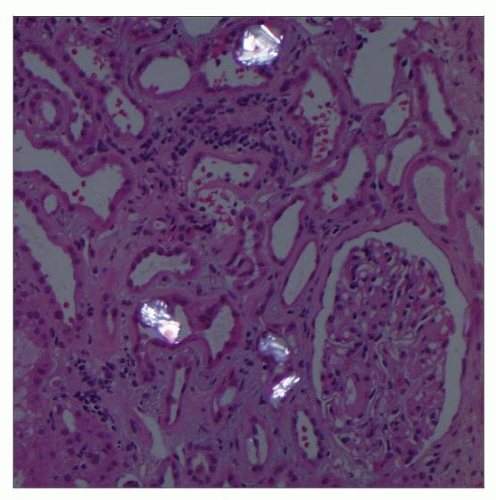Secondary Oxalosis
Lynn D. Cornell, MD
Key Facts
Etiology/Pathogenesis
Oxalate accumulation in kidney
Enteric malabsorption (gastric bypass)
Ingestion of oxalate-containing foods
Pyridoxine deficiency
Ingestion of ethylene glycol
Clinical Issues
Acute or chronic renal failure
Nephrolithiasis/progressive nephrocalcinosis
Microscopic Pathology
Calcium oxalate crystals within tubular lumens, tubular epithelial cytoplasm, and interstitium
Crystals translucent and strongly birefringent
Top Differential Diagnoses
Primary oxalosis
Other crystals, such as 2,8-dihydroxyadenine, urate, drugs
Acute tubular injury
TERMINOLOGY
Synonyms
Oxalate nephropathy
Oxalosis
Definitions
Deposition of excessive calcium oxalate within kidney parenchyma due to excessive intake or decreased excretion
ETIOLOGY/PATHOGENESIS
Increased Blood Oxalate Levels
Caused by increased intake, increased absorption, decreased excretion, or vitamin deficiency
Enteric hyperoxaluria (malabsorptive states)
Increased oxalate absorption by gut; causes include
Gastric/intestinal bypass surgery
Prolonged use of antibiotics
Crohn disease/celiac sprue
Pancreatic insufficiency
Stay updated, free articles. Join our Telegram channel

Full access? Get Clinical Tree





